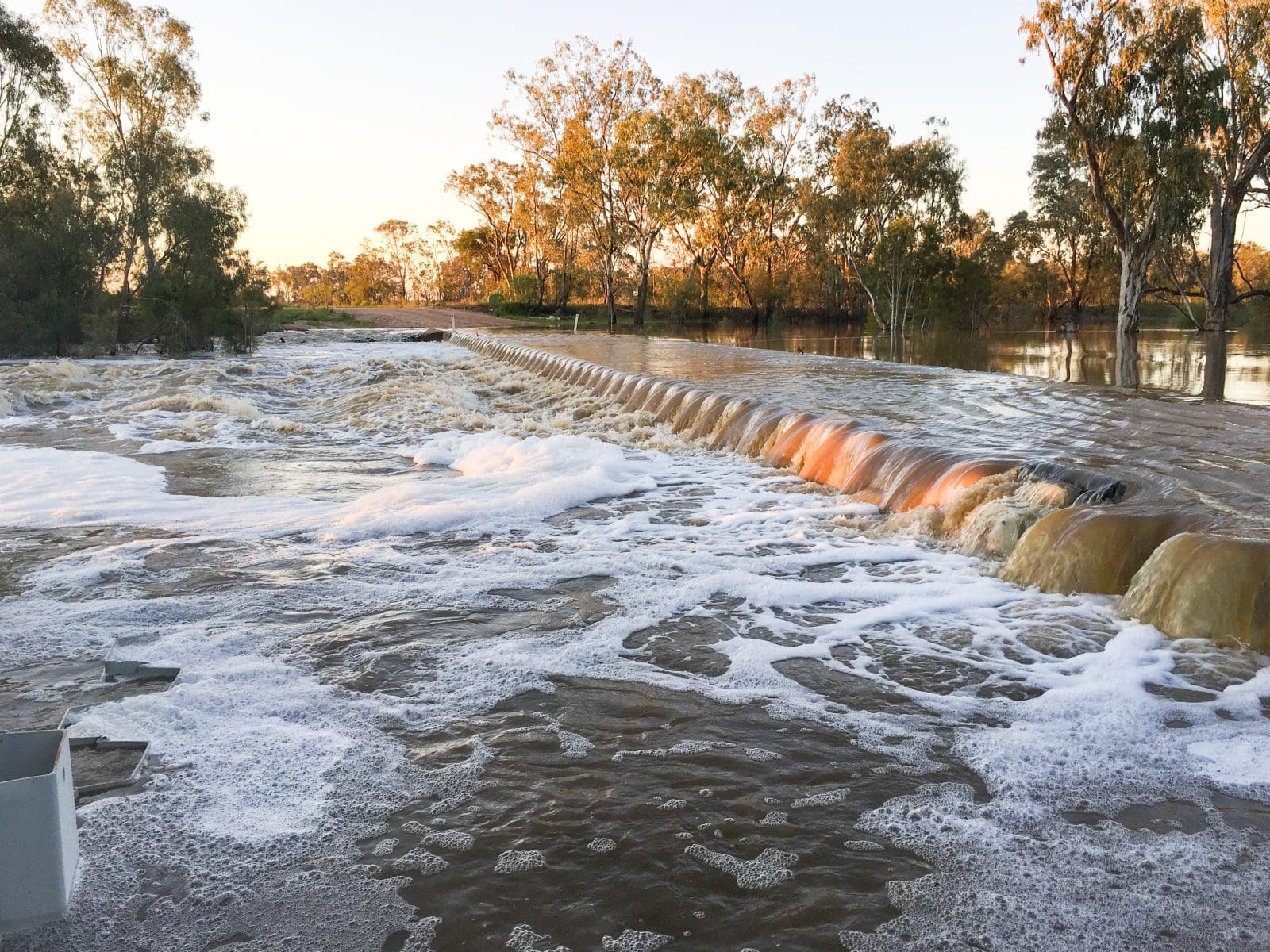
The Worral Creek Aggregation with its sizeable water entitlements from the Border Rivers formed the biggest cropping or mixed-farming transaction of 2024. Photo:JLL
THIS WEEK’S property review showcases a state-by-state snapshot of the defining property sales across Australia, as reported over the past 12 months.
This is not a definitive list, as other significant properties have sold in off-market deals.
It is, however, interesting to look back over the past year at the prices and size of the more significant cropping and mixed farming properties that have changed hands.
Biggest transaction
August – A new partnership between Melbourne-based Warakirri Asset Management and Alkira Farms, a subsidiary of US-based global agricultural investment company Farmland Reserve, paid $360 million bare for what was described as one most significant irrigated cotton enterprises to hit the market in recent years.
Southern Queensland’s 26,855ha Worral Creek Aggregation, boasting 65,900ML of water entitlements, is one of Australia’s largest privately owned irrigation and dryland farming enterprises underpinned by first-class infrastructure, water security and reliability.
Herron Todd White valuer Will McLay said the sale price reflected up to $10,000/ha for irrigation land and around $5000/ha for the dryland cultivation country.
“There doesn’t appear to be any level of discount for scale, with institutions and large private families paying level money with everyone else,” Mr McLay said
The institutional-grade irrigated cotton asset comprises seven non-contiguous properties across four hubs between Talwood and Mungindi in the Border Rivers region.
Consistently producing more than 75,000 bales of cotton a year or on average, and yields of 14.5 bales/ha, around 7510ha is developed to bankless, siphon and spray irrigation designed to enable excellent water recycling and turnaround capacity.
An additional 6720ha of dryland farming grows a diverse range of cereals and legumes.
The livestock enterprise supports 500 breeders plus progeny underpinned by a 999SCU accredited feedlot.
Worral Creek is located at the confluence of two major rivers and numerous creek systems, enabling the efficient capture of water fed by inflows throughout the vast Border Rivers catchment.
Best-performing region
One of the best performing regions for cropping/mixed farms was the Lachlan Valley, south of Forbes, in central western New South Wales.
In a two-month period, three notable holdings spanning 37,000ha achieved more than $209 million.
March – 14,075ha Sunshine Farms Aggregation was sold by AAM Investment Group and purchased by Nuveen for $96M including 14,766ML of water entitlements. The irrigated and grazing country across five non-contiguous holdings grows cotton, wheat, barley, faba beans and fodder to support beef, wool and prime lamb production;
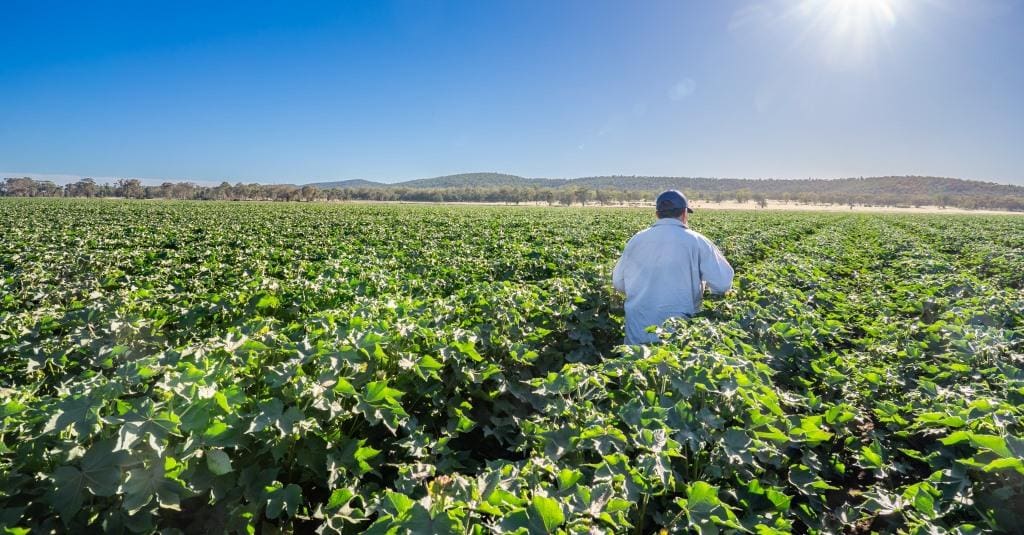
The Sunshine Farms Aggregation south of Forbes sold to Nuveen for $96M. Photo: AAM
March – 14,438ha Borambil Station, near Condobolin, was sold by Paraway Pastoral and purchased by two local producers for a combined $43.57M. Elias Pastoral paid just over $21.57M, not including the 3500ML of water entitlements, for 6230ha, while Borambil Farming paid $22M for 8208ha. With an estimated carrying capacity of 40,000DSE, the aggregation offers sheep and lamb production,
cattle backgrounding, and dryland and irrigated cropping;
April – 8432ha Timberscombe was offloaded by Duxton Farms and purchased by PSP-owned Altora Ag for $70 million. One of the largest contiguous dryland cropping holdings in the southern half of NSW is
grows wheat, barley, canola and chickpeas on 7794 arable hectares.
Most active private buyer
One of 2024’s most active private buyers was Chinese-born, Sydney-based investor Jacky Cheung of Marina Seven Holdings, who forked out $133.45M for three properties in northern NSW.
In June, Mr Cheung added the Commins Portfolio to his existing Riverina assets. He paid around $88M for the institutional-grade irrigated opportunity underpinned by substantial water entitlements in southern NSW. Located on the northern side of the Murrumbidgee River, 3km south of Whitton and 17km east of Darlington Point, it spans 2807ha across four non-contiguous hubs within an 18km radius.
Mr Cheung also purchased neighbouring grazing properties in the Upper Hunter region of NSW.
July – Mr Cheung paid $32.5m for the 5810ha Balarang Station, north-east of Scone. Bookended by the notable Waverley and Timor Stations, it neighbours the 2122ha Fernleigh, which Mr Cheung purchased in August. The cattle-trading enterprise using regenerative practices was one of the largest properties transacted in the Timor district in the last two decades.
August – The 2122ha breeding and finishing livestock operation Fernleigh, which adjoins the Packer family’s Ellerston Station, was purchased by Mr Cheung for $12.95M. Interestingly, the property last traded hands in June 2021 for $7.75M. Located 45 minutes from Murrurundi and 85km north-east of Scone, the undulating to hilly pasture-improved grazing country has chocolate basalt with some red loams offering a high carrying capacity, with significant scope for further development.
In March 2022, Mr Cheung paid more than $11.25M for the nearby 1679ha Timor Creek, a well-developed beef cattle operation situated 29km from Murrurundi and 45 minutes north-east of Scone.
Highest sales on a state-by-state basis
Western Australia
March – Altora Ag secured the 9637ha Varley Farms, 80km south-east of Hyden, in the southern wheatbelt region, from Paul and Deidre Cowan who own Arkle Farms.
While the price remains undisclosed, it is understood to have achieved around $50M bare – a record level of value.
Varley Farms formed part of Project Jaal, an institutional-grade portfolio spanning close to 43,000ha across two states, 26,834ha in WA and 16,097ha in Victoria.
When it was offered to the market in June 2023, it was anticipated to raise around $400M.
When it failed to sell via an expressions-of-interest campaign, the properties were split up and offered off-market.
Varley Farms, once owned by Westchester, is extremely well-developed in terms of infrastructure and machinery movements for broad hectare dryland cropping.
Its large paddocks grow wheat, canola, barley, lupins and oaten hay.
Situated in a 330mm average annual rainfall district, it has good elevation which means it is not subject to frosts.
April – A near neighbour paid $27M for the 9910ha Amaroo, described as one of the best properties to ever come to the market.
Sold by the Hodgson family after almost 100 years of ownership, the quality, turnkey mixed cropping and grazing operation is situated 25km east of Kulin in WA’s Eastern Wheatbelt region.
Around 69 percent, o4 6866ha, is arable, with last year’s cropping program growing 2532ha of wheat, 620ha of barley and 180ha of oats.
The balance comprises natural timber areas and salt bush grazing that can run around 6000 sheep.
Over the past 20 years, the Hodgsons have erected around 100km of new fencing, with the property fenced into 88 main paddocks.
Amaroo is watered by 38 dams, three equipped with solar pumps; scheme water is connected, and an additional supply is available from a government catchment.
Aggregation
February – John and Kerry Stone’s productive dryland cropping opportunity in the tightly held Great Southern region of Western Australia sold for $35M, or $10,720 per arable hectare including infrastructure.
Purchased by a local Esperance farming family for expansion, the 4387ha Shooters Hill Aggregation is 5km from Borden, 30km from Gnowangerup, and 80km from Katanning and Mount Barker.
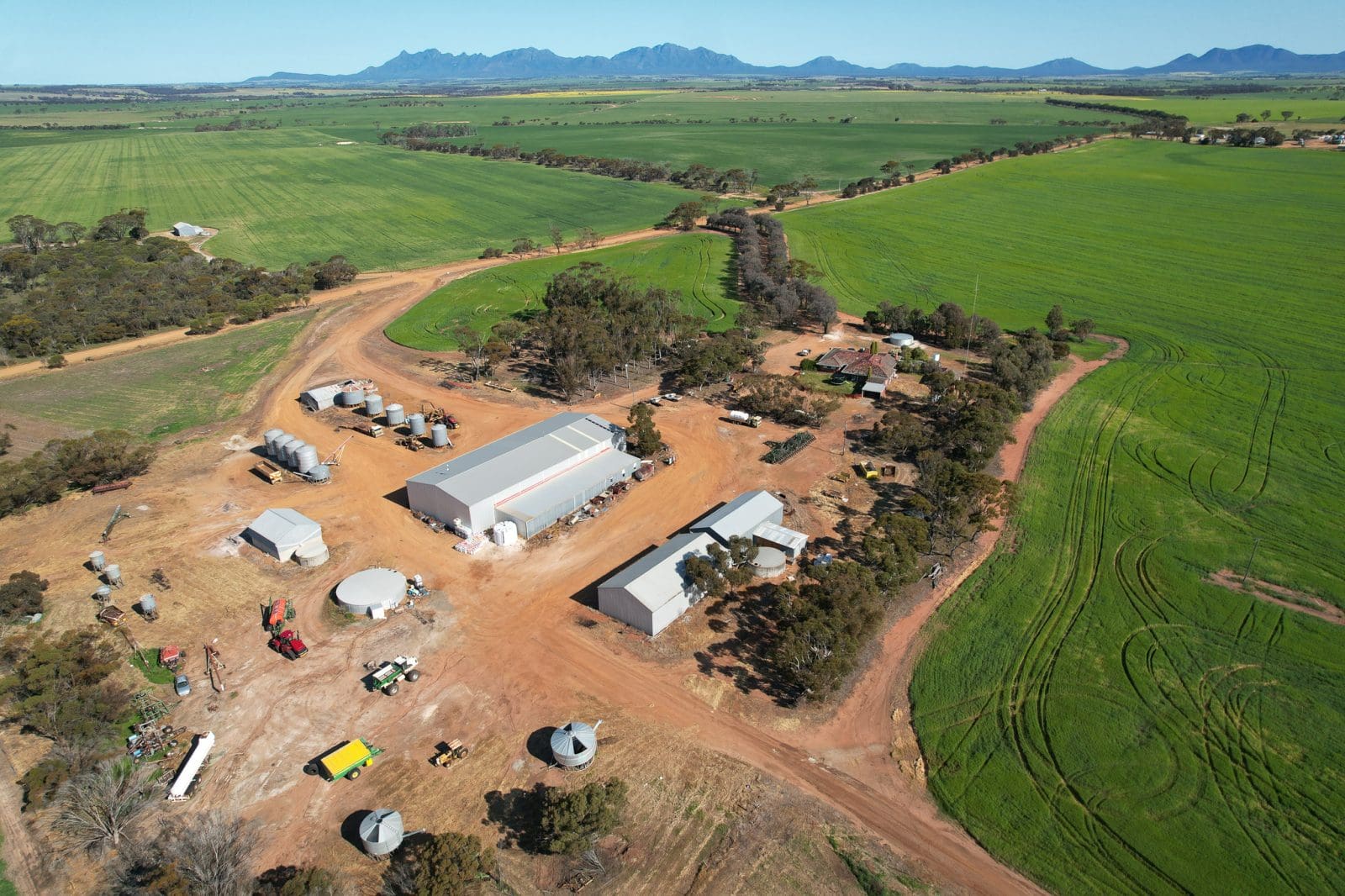
Shooters Hill Aggregation in WA’s Great Southern region sold for $35M. Photo: LAWD
Comprising four semi-contiguous holdings – 2210ha Madgedup, 1163ha, Shooters Hill, 527ha Tin Hut and 486ha Block – it had been aggregated by the vendor’s family over 110 years.
Benefitted by a Mediterranean climate, around 3265ha is considered arable and has been use for dryland cropping of wheat, barley, oats, canola, faba beans, lupins, and field peas.
Shooters Hill Aggregation has a history of achieving strong yields and was offered with high-quality structural and land ameliorant improvements.
Queensland
Grain only, and excluding the Worral Creek Aggregation
February – Morella Agriculture, owned by the Boggabilla-based Coulton family, added Goondiwindi’s historic Welltown Station to its existing portfolio of cropping assets in Qld and northern NSW.
The major crop and cattle producer and also pioneer of the cotton industry in southern Qld’s MacIntyre Valley paid more than $70M for the 10,842ha opportunity, comprising the 9540ha Welltown and the neighbouring 1302ha Eastwood, a price that reflected the quality of improvements.
Located 10km west of Toobeah and 68km west of Goondiwindi in southern Qld, Welltown features deep black floodplain soils conducive to water retention and crop production.
Around 8879ha is arable and developed to dryland farming.
During its three-year ownership, the Cameron family undertook an extensive development program to convert both properties into to a blue-chip institutional-grade farming asset.
Recent developments include a new grain complex boasting five silos with a total capacity of 11,250t, 22,000t of bunker storage pads, 360t of fertiliser, and 400t of seed in 10 silos.
Standout sale on a per-hectare basis
A tightly held inner Darling Downs irrigation and dryland farming asset with substantial water assets sold for $24.75M or $40,507/ha, the strongest broad-hectare cropping sale in 2024 for anywhere in the country.
The 611ha Oakleigh West, south-east of Dalby, benefits from deep fertile self-mulching soils.
It has 355ha of dryland farming and 199ha of sprinkler irrigation underpinned by regulated Oakey Creek water, 1349ML of water entitlements, a 244ML irrigation bore, and on-farm reservoirs totalling 1171ML.
Herron Todd White valuer Sam Mason said flood-free country in southern Qld is attracting a premium because on a per-megalitre basis, spray irrigation is capable of watering more hectares.
August – Central Queensland’s 2086ha Carnarvon View, west of Rolleston, sold after auction for $13.778M.
HTW said the price showed around $6500/ha for the cropping land and while it had some inclusions, was a significant increase on the previous 2013 sale price of $2.95M.
Around 1635ha of the fertile heavy self-mulching coolabah and brigalow floodplains and black soil downs country are arable and grow wheat, which was included in the sale.
The property is securely watered by two bores and dual frontage to the Albinia Creek, with access to the Panorama Creek and Comet River.
New South Wales
Grain only
In April – Duxton Farms accepted a $70M offer from PSP-owned Altora Ag for the 8432ha Timberscombe, one of the largest contiguous dryland cropping holdings in the southern half of NSW.
Fronting the Newell Highway and situated near Back Creek in the state’s south-west slopes region, it is 27km east of West Wyalong and 70km south-west of Forbes.
The turnkey operation has mostly open and level land with black self-mulching and brown clays growing wheat, barley, canola and chickpeas on 7794 arable hectares.
Its improvements include 8498t of grain storage.
Continuous-cropping aggregations
Gunedra
Merah North farmer Nigel Melbourne paid between $95M and $100M for country owned by Lord Michael Hintze’s MH Premium Farms, and neighbouring the Wee Waa township.
The off-market sale of the 3888ha Gunedra Aggregation included 2208ha of fertile floodplains adjoining the Namoi River and Pian Creek, worth $29.5M, and substantial water entitlements.
The offering consisted of the 1119ha Gunedra with 734ha lasered irrigation, 1089ha Redcamp with 566ha lasered irrigation, Tarong, Yarraman, and North Garden, aggregated over a 13-year period.
Combined, Gunedra Aggregation has around 2000ha of irrigated cropping growing cotton, wheat, sorghum, corn, and chickpeas.
The 632ha Molleen, which formed part of the aggregation, was auctioned separately and purchased for $7.8M by a local farming family building its portfolio.
The sale included 468ha of wheat and two water entitlements totalling 395ML and valued at $1.65m.
Commins Portfolio
June – Chinese born, Sydney-based Jacky Cheung paid around $88M for a southern NSW institutional-grade irrigated opportunity underpinned by 14,112ML of water entitlements.
The Commins Portfolio is located on the northern side of the Murrumbidgee River, 3km south of Whitton and 17km east of Darlington Point.
According to Herron Todd White valuer Andrew Garnsey, the $88M sale price was in excess of $12,000/ha for the irrigated land excluding water.
“This represents a premium on recent market sales rates and highlights the demand for large scale turnkey holdings in this locality, particularly with multiple sources of irrigation entitlements,” Mr Garnsey said.
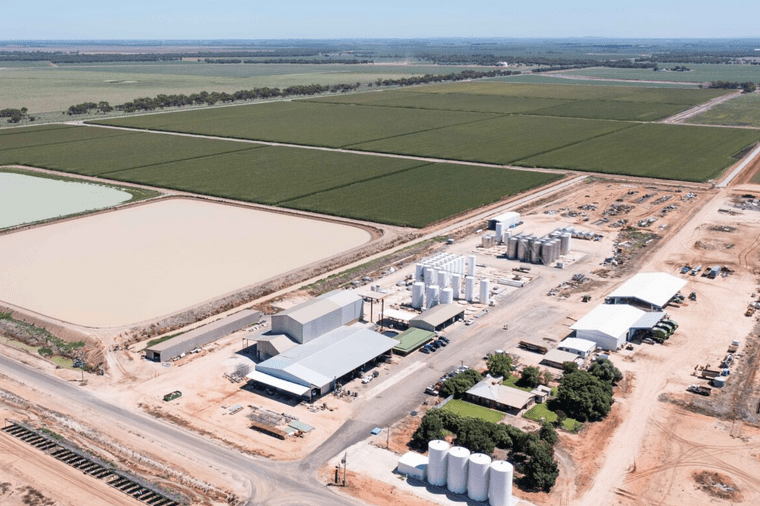
The Commins Portfolio in the Riverina region of NSW sold for around $88M. Photo: LAWD
Spanning 2807ha across four non-contiguous hubs within an 18km radius, the Commins Portfolio consists of the 1097ha Karwar, 1253ha Whitton Hub, 183ha The Weir and 274ha Nardoo.
While cotton is the most lucrative crop, the properties also grow corn, wheat, barley, and seed canola in rotation.
Described as first-class, the irrigation development on the Commins Portfolio includes 2244ha, or 80pc, of laser-levelled bankless channels, supported by 1860ML of combined on-farm water storage.
The 14,112ML of water entitlements comprise 9700ML of surface water and 4412ML of ground water, which underpin the operation.
Mixed-farming aggregation
Sunshine Farms
March – AAM Investment Group offloaded its 14,074ha Sunshine Farms Aggregation in the Lachlan Valley of NSW to Nuveen for $96M.
Already a large-scale owner of agricultural land leased mostly to local operators, Nuveen invests funds on behalf of the US Teachers Insurance and Annuity Association of America and College Retirement Equities Fund (TIAA-CREF) and others.
Sunshine and Round Cowal, located on the western side of the Newell Highway south of Forbes, were purchased in January 2020, with AAM adding Bergen Park, Warili, and Glencoe to the portfolio.
The aggregation has high-quality clay loam soils that grow cotton, wheat, barley, faba beans, and fodder to support beef, wool, and prime lamb production.
An extensive irrigation development program has delivered 2071ha of laser-levelled flood irrigation with potential for a further 919ha, 60ha lateral spray irrigation and 6028ha of dryland cropping, as well as a jojoba plantation and saltbush grazing.
The combined 14,766ML of water entitlements comprises 11,556ML from the Jemalong Irrigation Scheme, 2050ML from the Lachlan River and 1160ML of Upper Lachlan Alluvial groundwater, supported by 300ML of on-farm storage.
Stand-out on a per-hectare basis
June – A neighbour paid $16,811/ha for a productive dryland cropping operation in northern NSW, exceeding expectations by around 30 percent.
The 809ha Kalua, 10km north of Pallamallawa and 42km north-east of Moree, was sold for for $13.6 million including 597ha of barley and 155ha of faba beans.
Farming country in the Pallamallawa district is tightly held and was anticipated to make between $12,500 and $15,000 an arable hectare.
Boasting self-mulching clay soils suited to both summer and winter crops, around 752ha are currently farmed to barley and faba beans.
For the past 10 years, a strategic weed plan has been effectively managing difficult-to-control weeds.
Kalua has a double frontage to the Creamin Creek and is watered by a bore and two dams.
Victoria, Tasmania and South Australia
The southern states have been experiencing dry seasons, which Herron Todd White valuer Graeme Whyte said resulted in a more cautious approach from farmers who elected to preserve their cash, given the high cost of inputs.
“This tends to put any expansion plans on hold,” Mr Whyte said.
“The reduced sentiment has been reflected in fewer property sales.
“It is also clear that agents and vendors have delayed marketing of cropping properties until the seasonal conditions improve.”
Victoria
Continuous cropping
April – Australian-owned agricultural investor, developer and manager GO.FARM paid the Dean family more than $30M for two historic properties in Victoria’s Western District to expand its cropping program.
The 2336ha Eurambeen Station near Beaufort and the 979ha Grandview, an aggregation of three contiguous soldier-settler blocks, are located west of Ballarat near Ercildoune.
Featuring productive red and grey soil profiles, the flat to gently undulating country on Eurambeen is suited to cropping or grazing an estimated 33,000 DSE.
With a history dating back to 1840, Eurambeen Station’s agricultural track record was disrupted in the early 2000s by a period of managed investment scheme bluegum plantings which have now been removed.
Grandview originally formed part of the Langi Kal Kal pastoral operation and has run sheep and produced potatoes, pyrethrum, cereals, oilseeds, and summer fodder crops.
Eurambeen Station and Grandview are situated in a 650-700mm average annual rainfall zone and benefit from 790ML of irrigation water entitlements.
At the time of sale, GO.FARM said the properties would respond well to further investment in drainage, soil fertility, agronomy, technology, and infrastructure.
Mr Whyte said the sale of Eurambeen and Grandview shows a continued corporate interest in buying productive cropping country in safe rainfall areas.
Mixed farming
Mellool Station
May – A neighbour paid around $10M to expand with a southern Riverina mixed enterprise.
The 4140ha Mellol Station is located 26km east of Swan Hill in Victoria’s north- west and, at the time of sale, was described as one of the major property transactions in the region in recent years.
The well-watered property has 7km of Murray River frontage, in addition to Bullockhide and Waddy creek frontages.
More than 1200ha is laid out to irrigated rice, cereals and pastures, with the balance running 4000 ewes.
Mellool Station was offered with 32ML of stock and domestic water and 30ML of general security water plus basic landholder rights (BLR).
Tasmania
St Patricks Run
July – A productive and versatile irrigation asset in northern Tasmania sold to an existing dairy farming company for around $10M.
The 1501ha St Patricks Run, incorporating the 563ha Bullocks Hunting Ground, is situated at Nunamara, 17km east of Launceston and 28km north-east of Evandale.
Situated in a reliable 1043mm average annual rainfall area, St Patricks Run is underpinned by highly fertile volcanic red and black basalt soils.
It is also suited to cattle, sheep, cropping, horticulture and potential carbon opportunities.
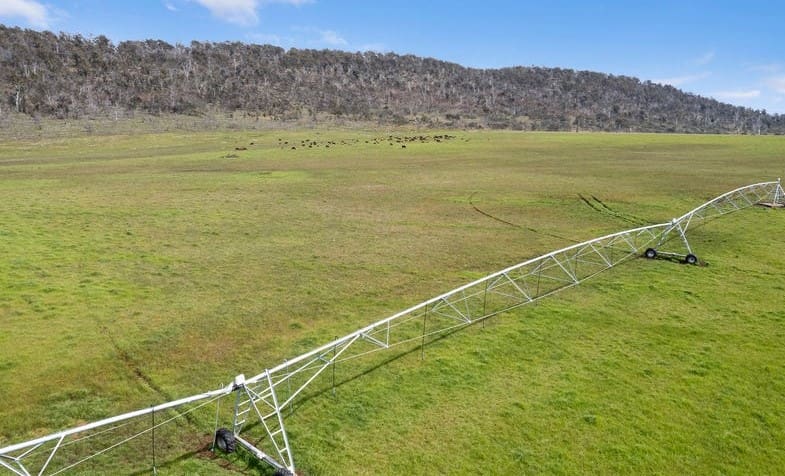
St Patricks Run in northern Tasmania includes significant irrigation infrastructure, and has been sold to a dairying company. Photo: Elders
It has 2000ML of irrigation entitlements, a 2100ML storage dam and excellent irrigation infrastructure including 250ha under centre pivots with significant scope for further development.
St Patricks Run also enjoys an 8.8km frontage to the St Patricks River and a 2.6km frontage to the North Esk River.
The Bullocks Hunting Ground block had been managed under a cell-grazing system running 11,300 dry sheep equivalents; with further development, it was suggested numbers could be lifted to 14,400 DSE.
South Australia
There have been no obvious sales of scalable cropping land in South Australia this year.
Phil Schell Real Estate principal Phil Schell said after a late seasonal break, low winter rainfall and reduced grain prices, the tap turned off.
“While there have been some successful smaller grain property transactions, most vendors stepped back because it wasn’t time to go to market,” Mr Schell said.
“They are now waiting to see solid summer rains and hopefully a good start to Q1 in 2025.”
In fact, Mr Schell is waiting to launch a 1600ha cropping property on the Eyre Peninsula and is aware of three major corporates looking to purchase land.
At this stage, he doesn’t believe any off-market sales have occurred.
In summary
At the time of publication, Grain Central counted at least 31 grain properties across the country as sold, and 19 listed for sale.
At least 27 mixed farms across the country have sold, while a further 63 are listed for sale.
Disclosed cropping and irrigation property sales reported in 2024 by Grain Central show:
- 1 property sold under $5M;
- 2 properties sold in $5M-$10M;
- 5 properties sold in $10M-$15M; and,
- 11 properties achieved above $15M.
Disclosed mixed-farming property sales reported in 2024 by Sheep Central and Grain Central show:
- 0 properties sold under $5M;
- 2 properties sold in $5M-$10M;
- 6 properties sold in $10M-$15M; and,
- 18 properties achieved above $15M.
Disclosed cropping and irrigation property sales reported in 2023 by Grain Central show:
- 0 properties sold under $5M;
- 5 properties sold in $5M-$10M;
- 7 properties sold in $10M-$15M; and,
- 4 properties achieved above $15M.
Disclosed mixed-farming property sales reported in 2023 by Sheep Central and Grain Central show:
- 2 properties sold under $5M;
- 5 properties sold in $5M-$10M;
- 10 properties sold in $10M-$15M; and,
- 18 properties achieved above $15M.
Grain Central: Get our free news straight to your inbox – Click here
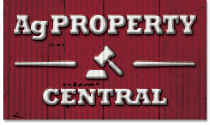
HAVE YOUR SAY